Lock Screensavers: Enhancing Security and Customization
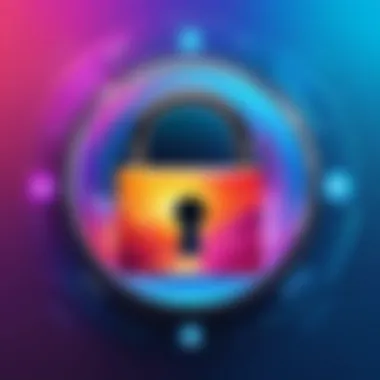
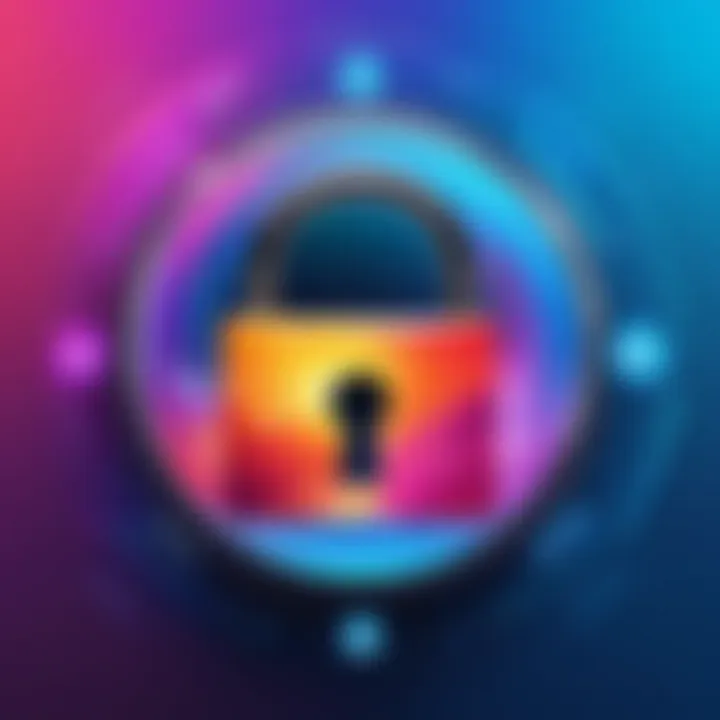
Intro
In today's digital landscape, the concept of lock screensavers has gained traction, acting as a bridge between aesthetic appeal and functional security. With the growing reliance on smartphones, tablets, and computers, the importance of these features has stirred a wave of interest. Lock screensavers not only serve to protect devices from unauthorized access but also offer a canvas for personalization. This article explores various aspects of lock screensavers, detailing their capabilities, customization options, and integration in modern technology.
Overview of the Technology
Lock screensavers have evolved considerably, aligning with advances in technology and user preferences. Initially designed purely for security, their functions have expanded to include display options like notifications, time, and even ambient information. Here, we examine the underpinnings of lock screensaver technology.
Key specifications
- Resolution and Graphics: High-definition display capabilities ensure that screensavers look crisp and clear.
- Battery Usage: Modern lock screensavers are optimized to consume minimal battery while engaging users.
- Interactive Features: Many screensavers now incorporate touch functionality, allowing users to interact with notifications directly from the lock screen.
Unique selling points
- Customization: Users can tailor screensavers to reflect personal style, incorporating photos, themes, and color schemes.
- Security: Enhanced security settings can include password protection, fingerprint recognition, and facial recognition.
- Functionality: Integration with smart home systems and notifications makes lock screensavers more than just a static display.
Design and Build Quality
The design of lock screensavers plays a critical role in user experience. They must balance aesthetics with functionality.
Material used
While software primarily drives lock screensavers, the quality of the device display also matters. Advances in material technology have led to better screens that can display vibrant colors and deep blacks, improving the overall look of screensavers.
Ergonomics and usability
Lock screensavers are designed to be user-friendly, ensuring easy access to information without unlocking the device. This balance aids in mitigating the frustration of multiple steps to access critical functions.
"A well-designed lock screensaver can streamline user interactions, enhancing efficiency and overall satisfaction."
In summary, understanding lock screensavers involves a look at technological specifications, design, and the purpose they serve. As more devices incorporate these features, exploring their capabilities and potential remains essential for optimizing technology usage.
With this foundation laid, the ensuing sections will delve into customization options, assess security implications, and highlight trends shaping the future of lock screensavers.
Understanding Lock Screensavers
Lock screensavers serve several important roles in modern technology. They not only provide a visually appealing interface but also contribute to security and personalization of devices. Understanding their various aspects can enhance the overall user experience and help users make informed decisions about their technology.
The significance of lock screensavers lies in their multi-functional nature. First, they act as a barrier to unauthorized access, effectively preventing prying eyes from viewing personal information. Second, they can display useful information, such as notifications, calendar events, or even the current weather. By being informed about these features, users can optimize their interaction with devices.
Moreover, customization options allow individuals to express their personal style and preferences. Users can choose images, themes, or even animated visuals that resonate with them. Ultimately, the choices made regarding lock screensavers can greatly impact daily device usage, productivity, and satisfaction.
Definition of Lock Screensavers
Lock screensavers refer to graphical displays activated on devices when they are idle or locked. Unlike traditional screensavers, which typically featured simple animations or slideshow formats, modern lock screensavers offer a blend of functional and artistic displays. They can incorporate both aesthetic elements, such as beautiful images, and practical utilities, like notifications or quick access features. This dual nature is crucial for enhancing usability while maintaining a secure environment for sensitive information.
Historical Context
The concept of screensavers originated in the early days of computer usage to prevent screen burn-in, especially on cathode ray tube (CRT) televisions and monitors. As technology advanced, screensavers evolved into entertainment and personalization tools. With the introduction of smartphones, tablets, and smart devices, the focus shifted from mere protection of screens to providing users with interactive and informative displays. This shift aligned with the growing emphasis on user experience, leading to lock screensavers that combine security, functionality, and style. Today, they are a staple of modern devices, reflecting both technological evolution and the preferences of diverse user demographics.
The Functionality of Lock Screensavers
Lock screensavers serve critical functions in modern technology use. By understanding their purpose and operation, users can optimize their experience with devices while enhancing both utility and aesthetic appeal. This section delves into how lock screensavers integrate into user habits, their roles in device protection, and the benefits they offer.
Purpose and Utility
Lock screensavers primarily function to secure devices in a visually appealing way. They act as a barrier against unauthorized access while displaying important information like time, notifications, or images. Here are some key benefits of lock screensavers:
- Security Enhancement: The primary purpose is to protect sensitive data. When a device is locked, it prevents others from accessing private information.
- Information Display: Users can customize what appears on their screensaver. For example, notifications from various apps can be shown, such as messages or calendar events.
- Energy Savings: Many modern screensavers use less power than active displays. This helps in prolonging battery life on mobile devices.
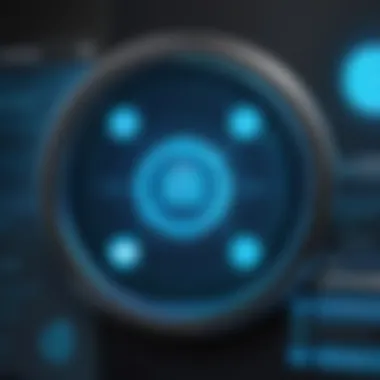
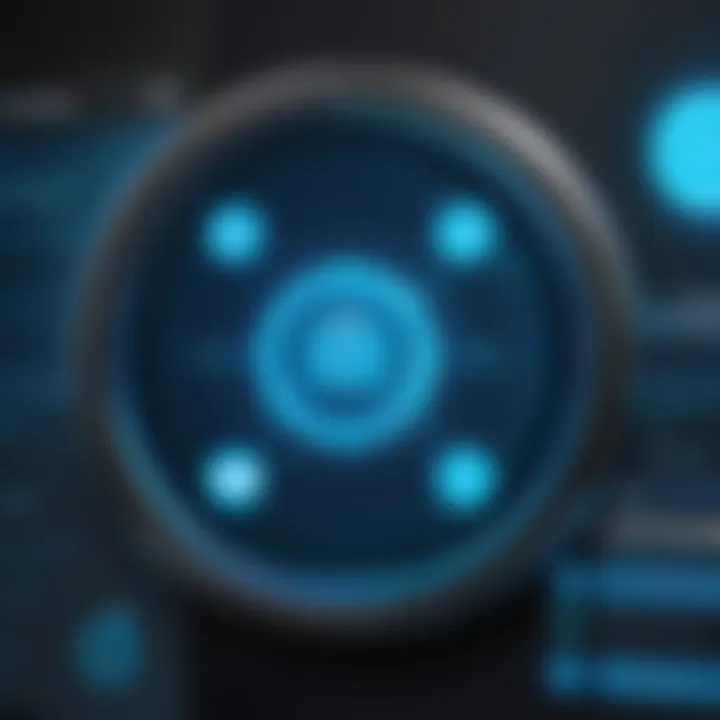
Users can choose to activate these screensavers based on their preferences and security needs, making them a flexible feature in tech devices.
How They Operate
The operation of lock screensavers is based on software designed to manage display functions when devices are not in use. Here’s a brief breakdown of how they work:
- Activation: When a user locks their device or it becomes idle for a certain period, the screensaver activates automatically. Users can typically set the time after which this activation occurs.
- Display Settings: Once active, the screensaver will show selected images, system information, or notifications. The user can personalize these elements, making the experience unique.
- Security Protocols: While the screensaver is displayed, any interaction with the screen generally requires user authentication, like a passcode or biometric verification, to regain access to the device.
Lock screensavers combine functionality with personalization to improve user interaction with technology. They not only serve as a protective measure but also as a canvas for self-expression. By tailoring screensaver settings, users can maximize their device's capabilities while ensuring privacy.
"A well-designed lock screensaver offers more than security; it enhances the entire experience of using a device."
In summation, the functionality of lock screensavers incorporates vital security measures and aesthetic choices, enriching the user experience while safeguarding sensitive information.
Customization Options for Lock Screensavers
Customization options for lock screensavers play a significant role in how individuals interact with their devices. These options are not merely aesthetic; they impact functionality, user satisfaction, and even security. Personalizing a lock screensaver allows users to express their preferences, thereby creating a more enjoyable digital experience. The choice of design, the addition of personal touches, and the use of third-party applications contribute to fully utilizing the screensaver potential.
Choosing the Right Design
The process of selecting an appropriate design for lock screensavers requires careful consideration. Users must balance personal taste with usability. A straightforward and clear design facilitates ease of access. For instance, selecting a minimalist style can declutter the screen, allowing essential information to be easily viewed.
Various designs exist. Some prefer vibrant images that create an engaging look. Others might opt for calm and muted tones that promote tranquility. Users should consider the resolution, as high-quality images usually enhance the visual experience.
Additionally, functionality is critical. The right design should make key notifications easily visible without interfering with the user's ability to unlock the device quickly. A well-thought-out design should harmonize form and function, ensuring a fluid transition into the device's primary interface.
Adding Personal Touches
Adding personal touches to lock screensavers further enhances user interaction. This can be done in numerous ways. For example, users can include specific images that resonate with them, such as family photos, favorite landscapes, or artwork. Incorporating these personal elements fosters a stronger emotional connection to the device.
Beyond images, customizing fonts and colors also provides a chance to reflect personal style. Users might choose a specific typographic style that aligns with their overall device theme. Custom colors can breed a unique visual language that resonates with the individual.
To take personalization further, some users integrate motivational quotes or affirmations that could inspire them daily. These subtle details accumulate to create an experience that feels distinctly personal.
Third-Party Applications
Third-party applications offer a wealth of options that extend beyond the default settings provided by most operating systems. Applications like Zedge or Wallpaper Engine allow users to explore a variety of unique designs and options. These platforms often feature animated wallpapers, dynamic elements, and community-generated content that can transform the standard lock screensaver into something remarkable.
When using third-party applications, it’s essential to consider compatibility with your device. Some applications are primarily designed for specific operating systems, impacting accessibility. Additionally, users should be cautious and choose reputable applications to mitigate security risks.
Installing such applications can sometimes come with performance trade-offs. Users must weigh the visual benefits against the potential drain on battery life or device speed. Proper research helps to select applications that enhance the user experience without compromising performance.
Ultimately, customization options for lock screensavers create opportunities for self-expression and improve functionality, making devices feel more personal and engaging.
Security Considerations
The topic of security considerations regarding lock screensavers holds significant weight in today's digital environment. As technology becomes more integrated into our daily lives, the need to prioritize privacy and protection of personal data is critical. Lock screensavers serve not only an aesthetic role but also act as a first line of defense against unauthorized access. Understanding the nuances of security concerning these screensavers is essential for all users, especially those who handle sensitive information.
Enhancing Privacy
Lock screensavers enhance user privacy primarily by obscuring sensitive data on a device. When a device is locked, displaying a screensaver can keep personal details, notifications, or messages hidden. This is crucial for preventing prying eyes from accessing potentially confidential information. For instance, if someone is in a public setting, a well-designed lock screensaver can effectively deter unwanted attention and maintain the integrity of private content.
- User Control: Users can customize their lock screens to display minimal information. This control helps in reducing the risk of unauthorized viewing.
- Instant Feedback: Many modern devices provide options for lock screen alerts; however, users can choose to limit these notifications to preserve privacy.
In addition, the act of frequently locking a device is a habit that promotes security as it reduces the time the device is vulnerable to being accessed by others. Hence, a lock screensaver does not merely provide visuals but also reinforces the privacy of users.
Potential Vulnerabilities
Despite their benefits, lock screensavers can also introduce some vulnerabilities that users should consider. Understanding these vulnerabilities is important for mitigating risks associated with data security.
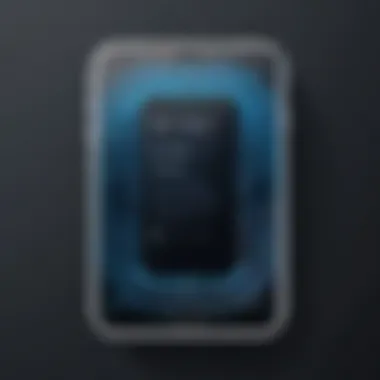
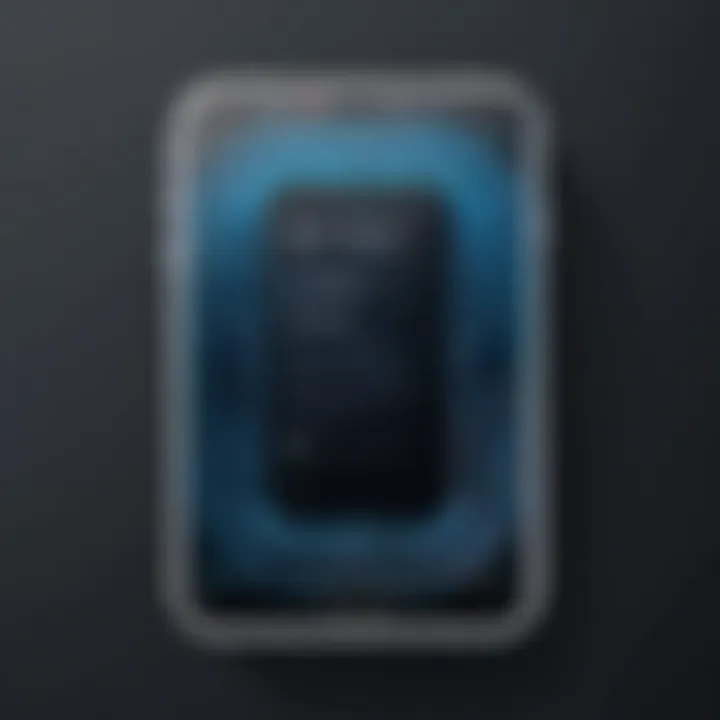
- Bypass Techniques: Determined individuals can sometimes find methods to bypass lock screens, particularly if the lock screensaver is poorly configured. Known vulnerabilities in operating systems can also be exploited by malicious actors.
- Social Engineering: Users can be tricked into revealing sensitive information. For example, a scammer could pose as a technical support agent while using social engineering tactics, potentially gaining access to a device even with a lock screensaver in place.
"While lock screensavers provide an additional layer of security, they are not infallible. Users must remain vigilant and adopt comprehensive security measures."
- Updates and Patching: Regularly updating the device software is essential for addressing security vulnerabilities that could be exploited through lock screens. New patches often fix these issues.
- Evaluate Customizations: Users should be cautious with third-party applications that offer lock screensaver customization, as some might not prioritize security and can introduce risks.
In summary, while lock screensavers can enhance user privacy and provide a pleasing visual, they also come with potential vulnerabilities. A careful balance of design, functionality, and security awareness will help users effectively protect themselves in a digital landscape.
Screensaver Integration with Modern Devices
The integration of lock screensavers with modern devices plays a crucial role in enhancing user experience and functionality. In an era where technology is seamlessly woven into everyday life, adapting screensavers to various platforms augments both aesthetics and utility.
Mobile Devices
Mobile devices, such as smartphones and tablets, frequently utilize lock screensavers to serve multiple purposes. These screensavers not only protect the device from unauthorized access but also provide essential information at a glance. On many platforms, users can customize backgrounds, notifications, and even widgets. This flexibility allows for immediate access to vital updates without needing to unlock the device.
Moreover, such integrations can optimize battery performance. By employing low-light or dark themes, screensavers can help conserve energy, extending device battery life. This is especially important for users who rely heavily on their mobile devices throughout the day. In addition, mobile operating systems like Android and iOS often offer specialized settings that maximize the efficiency of lock screensavers, enhancing overall user satisfaction.
Desktop Computers
Desktop computers have a rich history with screensavers, evolving from simple graphics to complex utilities. Modern desktop systems integrate lock screensavers to secure user information while providing a platform for personalization. Many operating systems allow users to select from a variety of screensaver types, including animated graphics, photo slideshows, or even custom designs.
Beyond appearance, lock screensavers on desktops can serve functional purposes. They often provide options for quick access to selected applications or notifications without needing to unlock the system fully. Organizations can also implement screensavers as a way to convey branding or essential information, showing reminders or company policies during inactivity.
Smart TVs and Home Assistants
Smart TVs and home assistants have jumped into the lock screensaver trend as well. For Smart TVs, integrated screensavers can display a variety of content—artwork, personalized photos, or even ambient lighting effects during inactivity. This feature effectively turns idle screens into interactive art pieces rather than mere blank displays.
For home assistants like Amazon Echo Show or Google Nest Hub, screensavers can showcase photo albums, calendar events, or news updates. They provide a means of visual engagement and functionality that enhances the user experience. As these devices continue to evolve, finding new ways to integrate lock screensavers will remain an important aspect of their development.
The effectiveness of screensavers on modern devices hinges on their ability to balance aesthetic appeal and practical functionality.
In summary, screensaver integration across mobile devices, desktop computers, and smart technology significantly enriches user interaction and enhances device utility. As technology advances, keeping these integrations updated will ensure that they remain relevant. The versatility inherent in screensaver functionality reflects a growing need for personalization and efficiency in the digital age.
Impact of Lock Screensavers on User Experience
Lock screensavers play a crucial role in shaping how users interact with their devices. Their significance extends beyond mere aesthetic considerations. Understanding their impact on the user experience is essential for optimizing technology usage.
Screensavers provide a visual interface that engages users while their devices are idle. They have the potential to enhance user satisfaction by offering an opportunity for personalization. Customizable options allow users to reflect their identities or interests, creating a sense of ownership. However, the challenge lies in balancing visual delight with functional efficiency.
"Aesthetic appeal can enhance engagement, but it should not compromise usability."
Visual Appeal
Visual allure is one of the most immediate benefits of lock screensavers. The appearance of a device influences a user’s first impression. A lock screensaver serves as the face of your device when it is inactive. Users may opt for serene landscapes, vibrant colors, or minimalist designs, depending on their preferences.
This emphasis on aesthetics caters to individual tastes. A visually appealing lock screen can prompt enjoyment every time a device is accessed. Moreover, high-resolution images and smooth animations contribute positively to the overall user experience.
In addition to enhancing appearances, a visually attractive screensaver can captivate users, nudging them toward more frequent interaction. The right choice of images or themes can be motivating and provide a welcome contrast to the more functional aspects of technology. However, users should be mindful that excessive animations can lead to distractions or performance issues.
Functionality vs. Aesthetics
While visuals are essential, functionality cannot be overlooked. The debate between aesthetics and utility is ongoing in the realm of lock screensavers. Users want an appealing lock screen, but it must also serve practical purposes.
Lock screensavers provide critical information at a glance. Notifications, time, and even quick access to functions like alarm settings or music control can all appear on a lock screen. The challenge lies in integrating these functionalities without cluttering the visual space.
A well-designed lock screensaver maintains a balance. It should be aesthetically pleasing while presenting key information efficiently. Users must carefully consider their needs and preferences. A more utilitarian approach could result in more functional screensavers, but at the cost of visual appeal.
Trends in Lock Screensaver Design
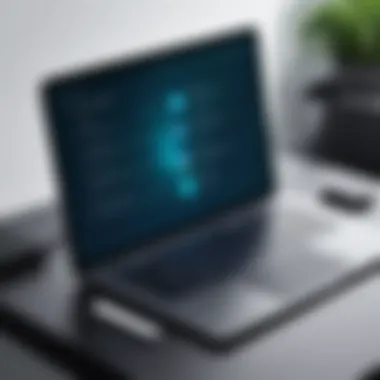

In the area of technology, design trends often reflect changing user needs and preferences. Lock screensavers are not exempt from this. The design of these screensavers impacts how users interact with their devices and their overall experience. Modern designs prioritize intuitive aesthetics while catering to practical needs. This section navigates the critical trends shaping lock screensaver design today.
Minimalism and Simplicity
Minimalism plays a vital role in contemporary lock screensaver design. The focus tends to shift towards clean lines and a straightforward interface. Users appreciate simplicity since it helps reduce clutter and distraction. With fewer elements on the screen, the functional aspects become more prominent. Minimal designs often feature a limited color palette and concise text.
- Advantages of Minimalism:
- Easier navigation for users
- Faster load times, which enhances device performance
- Less battery consumption in mobile devices
These attributes all contribute to a streamlined user experience. Users often find they can use their devices much more readily without overwhelming visuals.
Dynamic and Interactive Features
On the other hand, dynamic and interactive features are becoming increasingly popular as well. These features introduce movement and engagement, creating a more vibrant lock screen experience. Users often respond positively to screensavers that interact with gestures, changing visuals based on user behavior. This interactivity can be especially appealing to users who enjoy a deeper connection with their devices.
- Benefits of Dynamic Features:
- Keeps user experience refreshing and engaging
- Provides real-time information, such as weather updates or news alerts
- Encourages personalization, allowing users to tailor the screen to their liking
While some users may prefer minimal options, others gravitate towards screensavers that embrace dynamism. The balance between minimalism and interactivity illustrates a broader trend in technology today: creating interfaces that can adapt to different user preferences.
"The intersection of aesthetic appeal and functional design in lock screensavers reflects the evolving landscape of technology and user expectations."
Challenges and Limitations
Understanding challenges and limitations is essential to grasp the full scope of lock screensavers. While they provide various benefits, several issues can hinder their effectiveness. This section explores both performance issues and user behavior regarding the adoption of lock screensavers, revealing how these factors shape the future of this technology.
Performance Issues
Performance concerns often arise when using lock screensavers, particularly on mobile devices and older computers. Users may experience slowdowns or reduced battery life due to heavy graphical elements or animations. Modern lock screensavers, while visually appealing, can consume significant processing power. This is not suitable for users who prioritize efficiency.
Moreover, some devices may struggle to maintain optimal performance when multiple applications run in the background. This creates a challenging scenario, especially for those who rely on their devices for demanding tasks. Lock screensavers need to strike a balance between aesthetic value and resource allocation. A poorly optimized screensaver might exhaust system resources, leading users to disable it altogether.
User Behavior and Adoption
User behavior greatly influences the adoption of lock screensavers. Many users may not utilize these features effectively due to a lack of understanding or awareness. Ineffective tutorials and the absence of clear benefits can hinder users from embracing lock screensavers.
For instance, some individuals may prefer to use their screens as entirely functional interfaces without decorative elements. Others might view screensavers as mere distractions, especially in fast-paced environments. Addressing these behavioral tendencies is crucial for increasing adoption rates. Additionally, education about the advantages of well-designed lock screensavers is necessary to shift user perspectives.
"Understanding performance limitations and user preferences is key to enhancing the experience of lock screensavers for all users."
To foster greater acceptance of lock screensavers, developers can introduce user-friendly features that highlight their utility. Importantly, ongoing education on how these tools enhance security and personalization will encourage users to see their value.
Future of Lock Screensavers
As technology continues to evolve, the future of lock screensavers holds significant importance. This section examines how emerging technologies and predicted trends will shape the functionality and design of lock screensavers. Understanding these aspects is key for users looking to maximize their devices' potential.
In examining future trends, it is vital to consider how lock screensavers will adapt to changing user expectations and technological capabilities. They not only offer aesthetic appeal but also play major roles in privacy and security. As these factors become increasingly significant in our digital lives, the development of lock screensavers must address these concerns.
Emerging Technologies
Emerging technologies are transforming the landscape of lock screensavers. Several innovations are directly impacting how they function and appear. Here are some notable elements:
- Artificial Intelligence (AI): AI-enabled lock screensavers can learn user preferences, offering personalized content based on usage patterns.
- Biometric Security Features: Integration of facial recognition and fingerprint scanning enhances security, making unauthorized access more difficult.
- Adaptive Brightness Control: Advanced sensors can adjust screen brightness based on ambient light, improving visibility and conserving energy.
- Augmented Reality (AR): Incorporating AR into lock screensavers creates immersive experiences, allowing users to visualize information in a more engaging way.
These technologies are altering how users interact with their devices, making them more intuitive and user-friendly. As these capabilities expand, users can expect lock screensavers to offer enhanced functionality while maintaining aesthetic quality.
Predicted Trends
Predicted trends for lock screensavers suggest a shift towards more functional and interactive designs. Here are some anticipated directions:
- Increased Customization: Users will find more options for personalizing their screensavers, such as unique themes and layouts that reflect individual styles.
- Integration of Smart Notifications: Instead of static images, screensavers will likely display dynamic content, such as news updates and weather alerts, without needing to unlock the device.
- Focus on Minimalism: Designs may trend towards simple aesthetics, enabling users to access information quickly without overwhelming visuals.
- Enhanced User Engagement: Gamification elements may be introduced, encouraging users to interact with their screensavers for rewards or improved experience.
The merging of functionality and aesthetics will drive the evolution of lock screensavers, creating an engaging digital experience. As these trends unfold, users must remain aware of how these elements enhance their interaction with technology.







